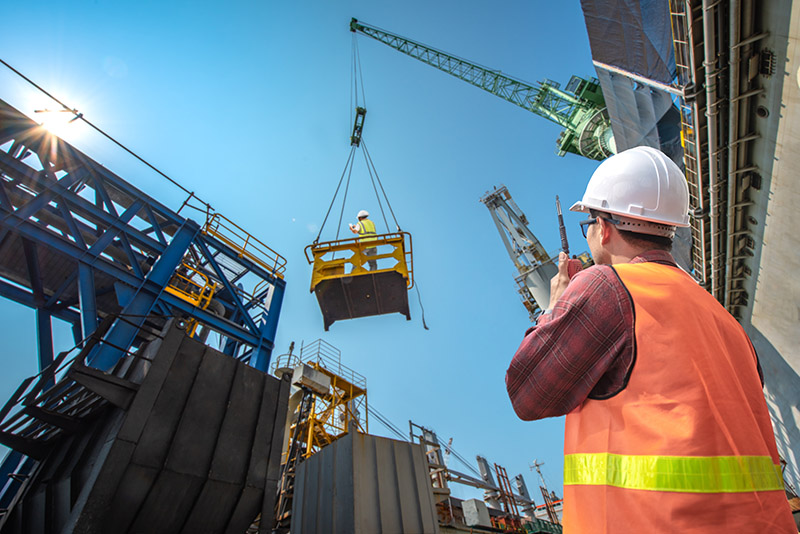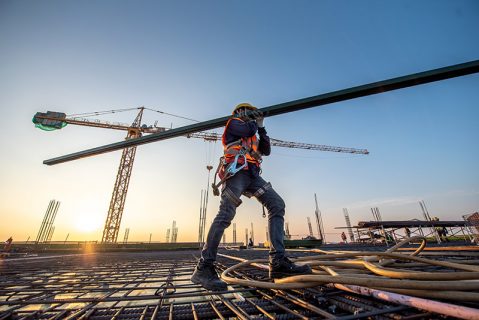The construction sector is one of the biggest industries worldwide. Hundreds, if not thousands, of workers are moving up and down, side to side, to create structures for commercial, residential, and industrial uses daily.
Unfortunately, it’s also one of the most inherently dangerous sectors. At least one worker is killed every 10 minutes in several ongoing construction projects worldwide, according to the International Labor Organization. This figure translates to over 60,000 deadly accidents annually.
It makes accident risk management and safety an essential component of construction projects. That said, here’s how to minimize the risks of fatal or injury-causing mishaps during construction:
1. Identify The Risks Involved
Ideally, a risk assessment must be done before a project. However, since the project isn’t static, managers must continuously assess internal and external factors that may impact ongoing work. And because of the inherent dangers involved, all states require construction businesses to acquire a Certificate of Insurance.
The most common risks involved are:
- Occupational– refers to injuries and deaths due to internal and external factors such as lack of precaution, the weather, and third-party liability.
- Project- involves management issues such as erratic work policies and time and resource allocation practices, among others.
- Contractual- describes breaches to the project contract.
- Financial- this involves funding and spending issues and unpredictable price hikes for construction materials.
- Natural or environmental- covers risks caused by force majeure, for instance, earthquakes, flooding, and severe storms.
Theft is also a common risk in construction sites because of the costly resources involved, such as generators, pieces of equipment and tools, and materials. Thus, besides strengthening occupational safety, the project manager must focus on on-site premises safety.
2. Determine The Best Risk Response Strategy
After identifying the risks and prioritizing the most probable hazards, identify your response to these potential occurrences. Identifying risks and response techniques are essential elements for preparing for a construction project. And they can be reviewed and revised depending on how the situation evolves.
There are four ways to respond to different risk types.
- Avoiding the risk is the best course of action when you can’t handle the risk—for instance, deciding not to build a nuclear plant along a fault line.
- Accepting the risk occurs when you don’t do anything but adjust your methods or policies to cope with post-incident—for instance, suspending work during a severe storm.
- Mitigating the risk is the best response if you can do something to reduce the hazards. Using safety equipment such as harnesses and nets, imposing safety protocols, training your workers, and providing them with the proper safety gear are great examples.
- Transferring the risk involves passing on the response to a third party. It happens when companies hire insurance companies for risk(s) coverage
3. Create A Risk Reduction Plan
You may choose and use several tools to reduce the risks based on the identified risk response strategies. These days, using technology in construction has become the norm in most sites for efficiency and safety.
-
Using Different Tools
Companies utilize different types of software for multiple purposes, such as data management, 3-D building design, and safety. Video surveillance systems can also boost security and safety compliance by keeping a good eye on the workers and spotting potential hazards nearby. These tools can also help deter thefts from raiding your project site.
For legal and contractual matters, it’s best to consult with a lawyer to determine the best course of action.
-
Crafting A Contingency Plan
Don’t forget to create a contingency plan as a backup to your risk mitigation strategy. Note that things may not go as planned or predicted, so you must know how to deal with uncertainties.
4. Ensure Compliance
Applicable laws vary from state to state, and knowing the basics is crucial to project planners, managers, and safety officers. Apart from building codes and other regulations, it’s vital to understand and implement safety regulations as required by law and industry standards.
On-site, safety protocols must be in place. Besides workers’ safety gear and surveillance cameras, other safety tools must be in place to enhance protection. These include proper lighting, alarm systems and signages, locks, fencing, and barriers. Access must also be appropriately controlled and managed.
As mentioned, all states require construction companies to have insurance coverage. Protection must be for the following:
- Workers’ compensation insurance
- General liability insurance
- Vehicle insurance
- Builder’s risk insurance
There are other insurance types available depending on the project’s nature. Paying for insurance not only ensures your company won’t be fined but also helps preserve workers’ lives and ensure timely project completion.
Conclusion
Managing risks in construction projects demands a proactive approach, where risks and mitigation planning must be done before the actual work. However, it’s not a one-time exercise; managers must periodically review, evaluate, and revise the strategies to optimize benefits and increase resiliency against all hazards.


